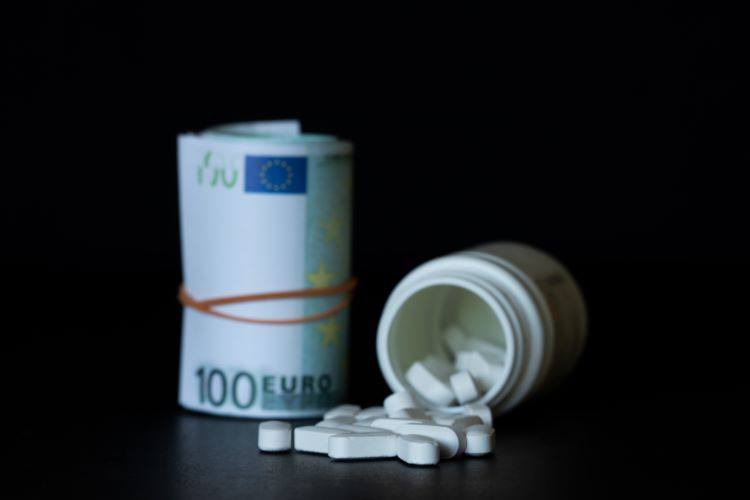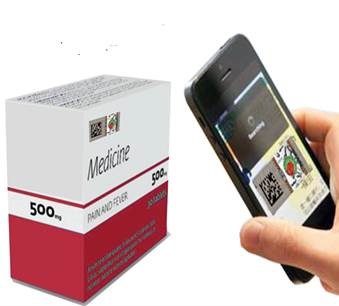Can holograms help in the frontline fight against pharmaceutical counterfeiting?
Posted: 24 November 2022 | Dr Paul Dunn (International Hologram Manufacturers Association) | No comments yet
With Europol advising that counterfeit pharmaceuticals continue to pose ‘…a substantial threat to the EU and affect most, if not all, member states’, Dr Paul Dunn, chair of the International Hologram Manufacturers Association, looks at developments in authentication holography.


The European Union Intellectual Property Office/ Europol joint report confirms that counterfeit pharmaceuticals continue to be a big problem across the European Union zone and a substantial threat for most, if not all, member states. Indeed, a 2020 operation coordinated by Europol across 27 countries led to the seizure of more than 25 million units of counterfeit anticancer drugs and erectile dysfunction medicines among other fake drugs worth nearly €73 million. Thirty-three million medical devices linked to the COVID-19 pandemic along with eight tonnes of raw materials, chemicals and antivirals were also seized.
The distribution of counterfeit pharmaceutical products, which include fake anticancer drugs, analgesics, antioestrogens, antivirals, anabolic substances and COVID-19 testing kits, has shifted from the physical to online markets, particularly via the dark web, where anonymous transactions between manufacturers, distributors and consumers are allowed. The number of unauthorised and unregulated online outlets selling counterfeit pharmaceutical products is continuously growing, with many selling counterfeit medications via the internet typically posing as legitimate vendors.
Counterfeit medicines and medical supplies can also cause significant harm to people, the report said. In some severe cases, death can be triggered by overdose when the counterfeit medicines are laced with fentanyl. Pharmaceutical crime also harms the legitimate manufacturers, who are impacted by counterfeits that can erode brand reputation and reduce the funds available for product research and development.
Tackling pharmaceutical counterfeiting continues, therefore, to be a clear and present priority for manufacturers, healthcare authorities and law enforcement. One area in which the problem can be tackled effectively is product packaging.
With predictions that the global market for anticounterfeiting packaging is set to reach almost $250 billion by 2026, growth in authentication and anti-tamper devices such as holograms appear to have a healthy future.”
With predictions that the global market for anticounterfeiting packaging is set to reach almost $250 billion by 2026, growth in authentication and anti-tamper devices such as holograms appear to have a healthy future.
New trends in pharmaceutical packaging follow developments in emerging markets, demographic changes and new technologies. With predictions that the global market for anticounterfeiting packaging is set to reach almost $250 billion by 2026, growth in authentication and anti-tamper devices such as holograms appear to have a healthy future. This comes on the back of a rise in wider global healthcare concerns, higher adoption rates of anticounterfeit technologies and greater awareness of the benefits of new track and track technologies and system integration.
Quality assurances through the use of holograms
Packaging featuring security devices can ensure quality and check the distribution and smuggling of illicit products, while items not displaying security devices like holograms can be quickly seized and destroyed. Today, we are seeing advances in application, film coating and manufacturing technology which is rolling back the boundaries for the use of a new generation of advanced holograms, facilitating fresh levels of visual effect, brand enhancement, regulatory compliance and anticounterfeiting.
The ability of the hologram to provide effective protection lies in its continuous innovation and integration with other technologies – to the point where evolution in techniques has succeeded in creating increasingly complex hologram-based devices that are easily recognised yet almost impossible to copy accurately.
Today, we see verification features including holography for proof of authenticity incorporated into pharmaceutical product labels, which include special features such as detachable documentation labels, transparent inspection windows for checking packaging content and near-field communication (NFC)/radio-frequency identification (RFID) chips for digital applications.
Several branded medicines are available that feature holograms on the packaging or in the blister pack.”
Several branded medicines are available that feature holograms on the packaging or in the blister pack. These include Meditag serialised hologram labels, first introduced in 2005 and found on all registered medicines in Malaysia to help pharmacists and inspectors detect unauthorised and counterfeit product.
The application, which is equally suitable for European markets, reflects the evolving anticounterfeiting role of holograms and their ability to combine authentication with detection and sometimes, pack enhancement. The success of the programme in Malaysia led to a fall in the percentage of counterfeit items seized – down from 2.23 percent to as low as 0.20 percent in only four years – suggesting holograms have demonstrably improved product authentication among end users. The fourth version was introduced in 2018. Incorporating advanced holographic features along with a data matrix code that, when scanned with a smartphone, identifies if the production is genuine or fake, thereby empowering consumers as well.
Using holography to tackle counterfeit pharmaceuticals
Blister packs can also benefit from anticounterfeiting holography. For example, some holograms can be designed so that they are only visible behind each pill/capsule cavity on the back of each pack, thereby allowing printing of dosage and marketing information on the area surrounding the pill/capsule recess. This gives consumers the ability to validate the authenticity of their purchases with the use of custom holograms.
Covert-hologram seals are also atracting interest within the pharmaceutical packaging sector. Developed to enable manufacturers, suppliers and patients to improve their packaging security, the seal displays an irreversible holographic effect providing tamper evidence and anticounterfeiting protection.
Elsewhere, holographic labels have been deployed effectively to arrest declining sales of pharmaceuticals. Romanian-based Biotehnos and Rompharm had seen sales of their Alflutop and Rumalon brands in Russia start to slide because both brands had been targeted by counterfeiters. The subsequent high percentage of fakes led to doctors losing confidence in the brands and no longer prescribing them.
Labels with a hot-stamp hologram applied on both ampoules and branded cartons, have not only countered the decrease in sales but, provide a means of verification to ensure doctors are clear on what features to look for and to help identify any fakes.
“The evolving role of the hologram has also been accompanied by the increased use of the security device in combination with other authentication technologies”
The evolving role of the hologram has also been accompanied by the increased use of the security device in combination with other authentication technologies. Track and trace solutions identify the origins of a pharmaceutical industry product and verify its authenticity throughout its journey from production line to the consumer. Today, optical security technology has advanced to such a position that when its integrated with track and trace it can provide manufacturers with the tools to be fully compliant with the forthcoming legislation – incorporating beneficial features that can help users generate unique sequential, encrypted or random serial numbers, or identify and mark products overtly or covertly either via special self-adhesive labels or directly onto pharmaceutical products using a variety of print technologies.
An expansive role for holograms…


Meditag serialised hologram labels
The ability of holography to incorporate other data forms and product tracking information continues to be paramount as it pushes forwards and the nature of anticounterfeiting changes with the times. This enables holograms to be used for an expansive range of pharmaceutical authentication and brand protection roles, linking on-pack product identification with supply chain management, market enforcement and forensic support services. In this way, the identity and distribution of goods can be controlled through a total system solution involving security authentication features, tracking mechanisms and investigative services.
Of notable value to the brand owner and a strong financial incentive to make the investment in such systems, is the fact that the information generated at the labelling stage can be linked to the company’s enterprise resource planning (ERP) system; enabling business functions such as manufacturing, supply chain management, finance, projects, HR and customer relationship management to be captured and better managed.
One application is for smart labels, specifically an Internet of Things label (IoT) that combines anti-counterfeit holographic and other technologies, with mobile authentication within a single product.
Moves towards outsourcing the production of pharmaceutical and healthcare products might be beneficial in terms of reducing manufacturing costs, but it can also impact upon the control of brand security and visibility. Here, holography can be integrated into the supply chain security process to allow companies to maintain control of their products – from the sourcing of labels or proprietary components to the manufacturing and shipment of finished goods.
Holography can also be integrated with secure web interfaces to help eliminate rogue ordering of products while authorised distributors can pick, pack and ship items in carefully measured quantities to customers, with the product’s movements throughout the supply chain, fully tracked and documented. Additionally, it is important to encourage the brand owners to take the necessary steps to create awareness about holograms to unleash their full potential to tackle pharmaceutical counterfeiting.
About the author
Dr Paul Dunn is chair of the International Hologram Manufacturers Association.
Related topics
Drug Counterfeiting, Drug Manufacturing, Labelling, Packaging, Regulation & Legislation









